 August 19th, 2014 The basement sub-floor work continues today. The remaining work was relatively simple and straight forward. Not a lot of pieces let to cut and so we were putting down panels very quickly. We completed the rest of the basement before noon today.
Here’s a looking at the entire basement sub-floor. Here’s where the laundry room will be. You can see in the top left corner the backwater valve access port and the house clean out. In the bottom left is the floor drain in the laundry room. And to the right is the sink drain and the primer lines for the floor drains.
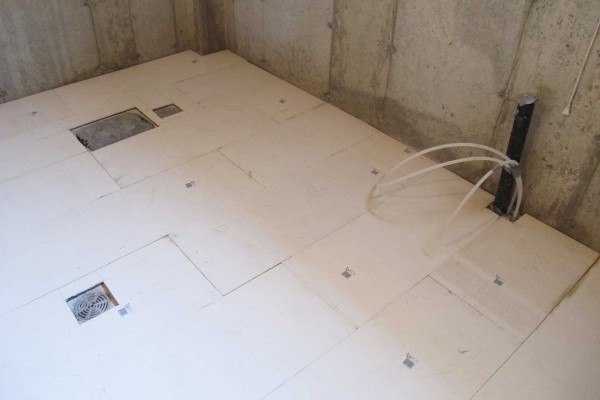
Continue reading ‘Basement subfloor day 2’ »
 August 18th, 2014 So I decide to put in some sweat equity into this house. The basement sub-floor is really easy to do and so I decide that I will do it together with my cousin. We started on the south wall. We snapped a chalk line for the first row to line up again, and then start to lay these Tyroc panels. down. The installation is really simple since you just put glues (PL Premium) on the exposed ship-lap tab and glue the panels together.
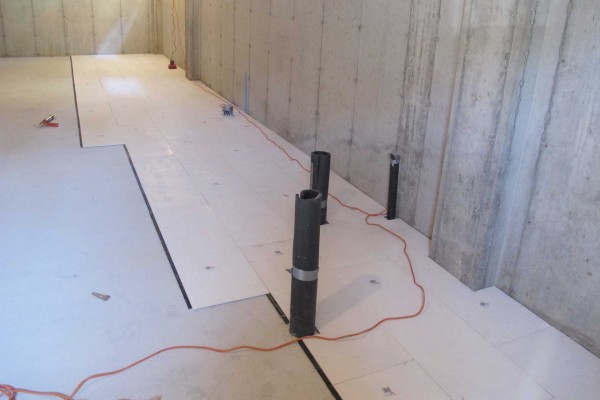
Continue reading ‘Basement subfloor day 1’ »
 August 17th, 2014 On Thursdy, I ordered 160 panels of basement sub-floor panels from Home Hardware. For this house, I decided to use Tyroc instead of the more usual DRIcore. So why not use a product that has been recommended by HGTV’s Mike Holmes or Bryan Baeumler? Well that’s because DRIcore has its own share of problems.
- DRIcore doesn’t actually stay dry. Its plastic base does not fully cover the entire base and so moisture can get to the OSB part of the board.
- DRIcore’s plastic base does not support mold growth, but if the OSB part get wet, it sure will support mold growth.
- DRIcore panels doesn’t actually stay together. Its tongue-and-groove installation means that the panels will move around. And since it is still wood in the OSB, it will expand and shrink causing more movement in the panels.
Now let’s compare that with Tyroc.
- Tyroc has a plastic base just like DRIcore. But with a top board made mainly of magnesium oxide. This is an inorganic material. This top board is impervious to fire, water and will not feed mold or mildew.
- Tyroc panels are glued together forming a continuous surface. It does not come apart like DRIcore. And since it has no wood component, it will not expand or shrink either.
- Tyroc is even environmentally friendly and green. The base is made of blend of recycled rubber from used tires and recycled plastic. The top is made of magnesium oxide which is mined, grounded into powder and made into a board.
And that’s why despite all the HGTV renovation shows are using DRIcore. I’m going to use Tyroc as my basement sub-floor.
On Friday the Tyroc panels are delievered. And on Sunday we’ve spent a bit time moving all those panels to the basement. These Tyroc panels are only 16″ wide. Making it easy to pass right through my basement window opening. So it was pretty simple. Would have a harder time with DRIcore since DRIcore is 24″ x 24″ and I won’t be able to pass them through the front window.
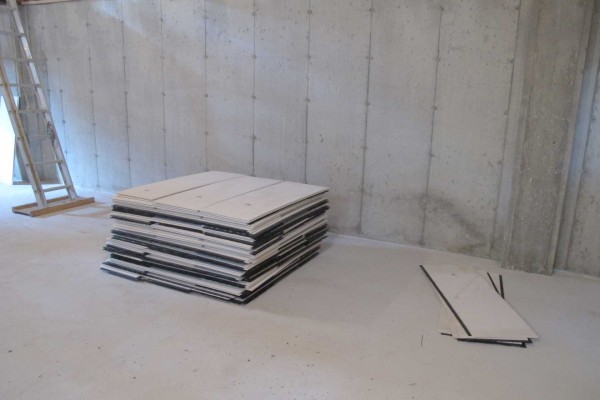
 August 13th, 2014 The basement looked dry so I went down to take a look. I wanted to make sure I can get to all the floor drains, back water valve access port, and clean out. Here’s what the basement looks like one day after the concrete is poured.
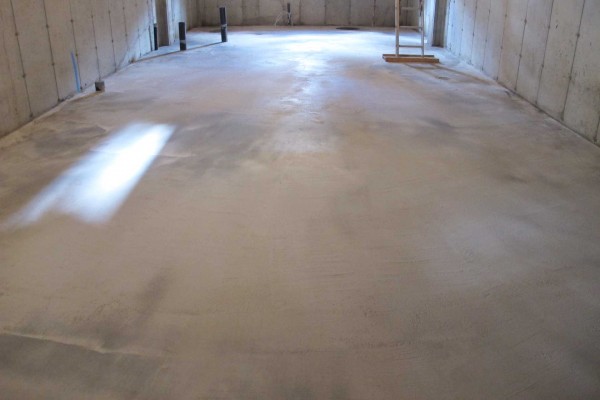
Continue reading ‘Basement floor’ »
 August 12th, 2014 A different day, a different truck is parked in front of the house. The crew from Belmont Concrete is here to pour the basement slab. There’s a small amount of preparation work to be done since yesterday they didn’t have enough wire meshes. So they laid down more wire meshes covering the entire basement area. Then its time to pour the basement slab.
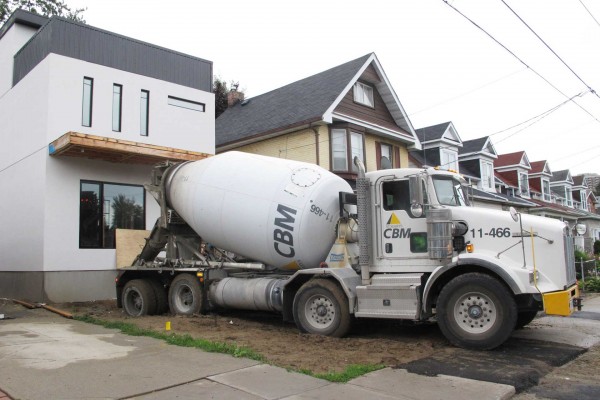
Continue reading ‘Basement slab’ »
 August 11th, 2014 The crew from Belmont Concrete is here to do preparation work for the basement slab. The work includes leveling the existing ground by spreading out the soil dug up by drainage trenches, lightly compact the ground. Then fill the basement floor with 4″-5″ of 3/4″ clear gravel. Then put down 3″ of rigid foam under-slab insulation followed by 6 mil polyethylene vapour barrier, and 6″ x 6″ #6 wire mesh.
Here’s the truck that’s here to shoot the gravel into the basement.
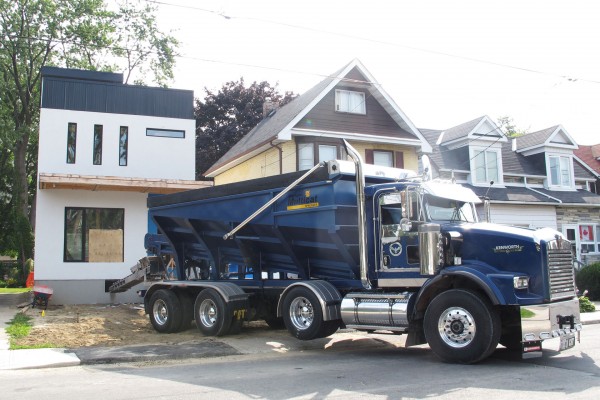
Continue reading ‘Preparation for basement slab’ »
 April 7th, 2014 Framing day 21. Today there’s significant rain in the forecast. But the framers are here to get some work done before the rain start to fall. Last Thursday, I messed up a bunch of measurement and so I needed them to correct all those as well.
The last remaining window opening on the second floor is cut open.
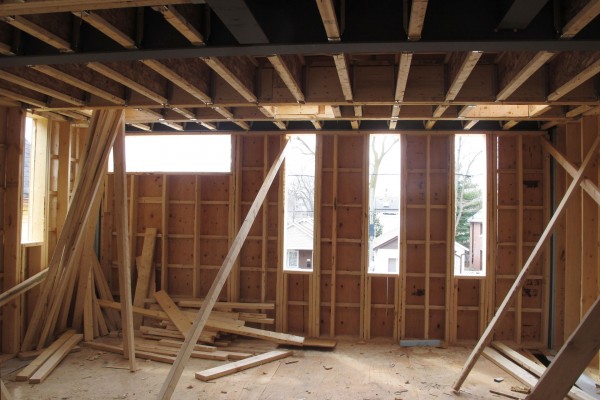
Continue reading ‘Framing day 21 / framing completed’ »
 April 3rd, 2014 Day 20 of framing. Most of the work is concentrated on interior walls today. There are not a lot of interior walls in this house. Only a few to separate out the bedroom and washroom where privacy is needed. The rest of the house will be all open.
This is the master bathroom wall in the foreground. This wall here is a 6″ wall and will carry very significant number of plumbing pipes and ducts.
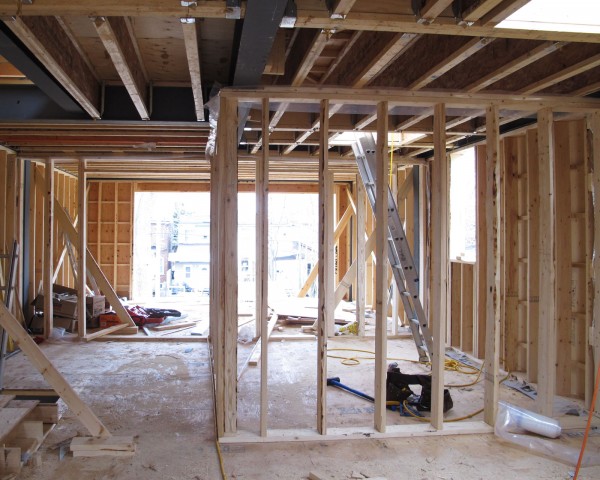
Continue reading ‘Framing day 20’ »
 April 2nd, 2014 Framing day 19 and we are almost there. The house is really taking its shape now.
Here you can see that the edge of the roof top where the glass guard rail will be installed is now packed with wood and ready for roofing.
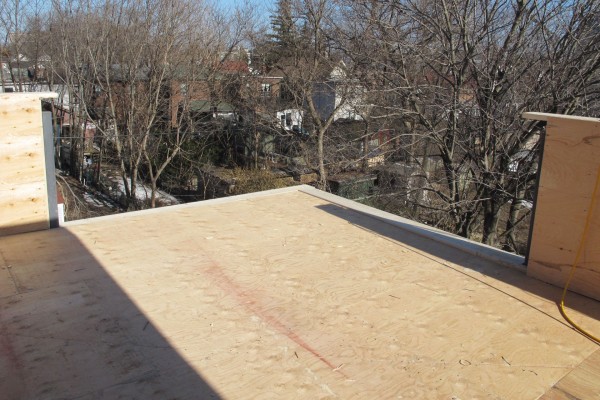
Continue reading ‘Framing day 19’ »
 April 1st, 2014 Framing day 18. Finally the house is taking its real shape. The 3rd floor access to the roof top terrace is nearly there. And they have just closed up the west wall on the second floor.
Here’s a look at the 3rd floor structure. The roof framing is not yet completed but it’s almost done. You can see the roof slope from west side down to the east side.
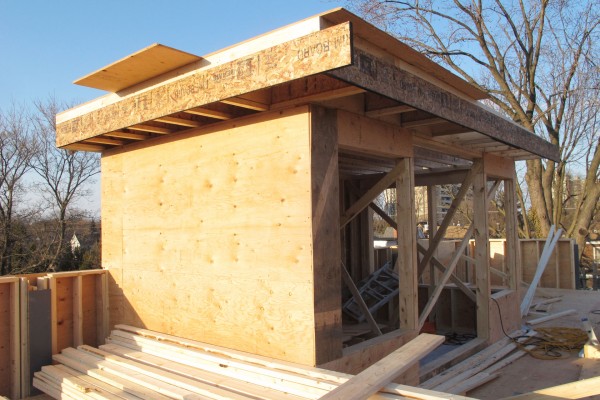
Continue reading ‘Framing day 18’ »
Page 3 of 6«12345...»Last »
|
|









